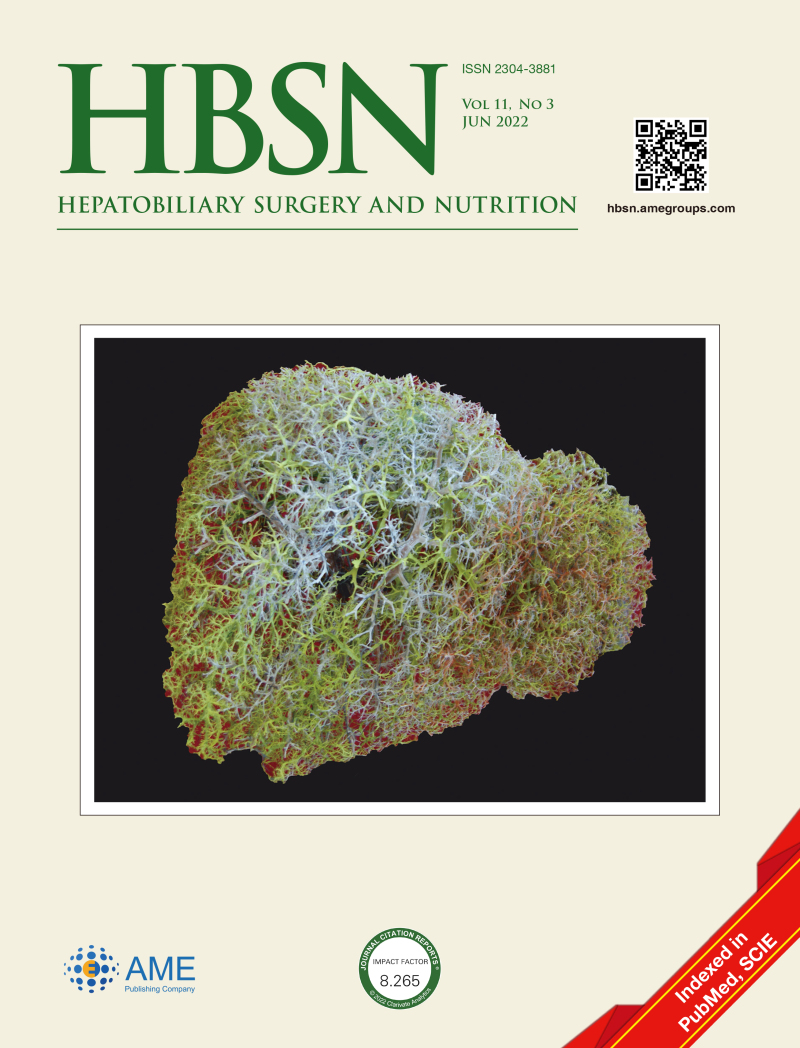Original Article
Impact of living donor liver with steatosis and idiopathic portal inflammation on clinical outcomes in pediatric liver transplantation: Beijing experience
This study provided new evidence in pediatric living donor liver allocation. Donor liver with mild portal inflammation would better not be allocated to recipients with high pediatric-end-stage-liver-disease score.
Peripancreatic vascular involvement in patients with type 1 autoimmune pancreatitis
This study revealed the real-world condition of peripancreatic vascular involvement (PVI) in patients with type 1 autoimmune pancreatitis (AIP) and described independent predictors of PVI development in AIP patients. The follow-up showed majority of PVI lesions achieved an improvement after corticosteroid treatment.
Have we really understood when the efforts of laparoscopic liver resection are justified?—a complexity-based appraisal of the differential benefit
The favorable biological scenario associated with laparoscopy allows to obtain significant benefits in the setting of complex procedures, constituting the prerequisite for adequate surgical outcome. The effort should be to maximize the laparoscopic approach in high complexity procedures by implementing surgical technique and perioperative management.
Validation study of postoperative liver failure and mortality risk scores after liver resection for perihilar cholangiocarcinoma
We validate postoperative liver failure (PHLFS) and mortality risk scores (POMRS) after liver resection for perihilar cholangiocarcinoma, which was established by Western cohort, by Eastern cohort. This external validation study showed that for PHLFS the threshold for discrimination, but the POMRS were not applicable.
Impact of pathological response after preoperative transcatheter arterial chemoembolization (TACE) on incidences of microvascular invasion and early tumor recurrence in hepatocellular carcinoma: a multicenter propensity score matching analysis
Our study indicated pathological responses (PR) ≥90% was an independent protective factor of incidences of MVI and prognosis; while PR<60% was an independent risk factor of incidences of MVI and prognosis. Patients with PR <60% were more likely to develop multiple recurrences.
Review Article
Extrahepatic organs in the development of non-alcoholic fatty liver disease in liver transplant patients
We propose 3 possible extrahepatic organs that participate in the NAFLD development process in LT patients. Potential mechanisms of NAFLD in LT context and current limitations in preclinical and clinical scenarios are discussed with suggestions for future study.
Editorial from the ACHBPT
Editorial
Could “Eating Behavior” be a novel lifestyle factor that modulates risk of gastrointestinal cancers?
Commentary


